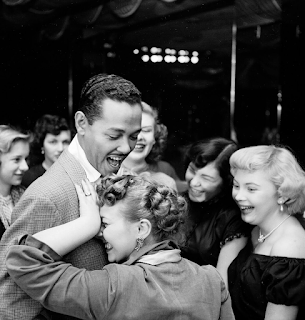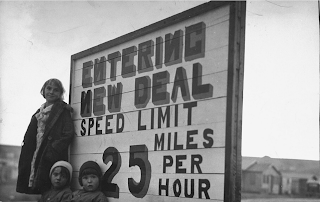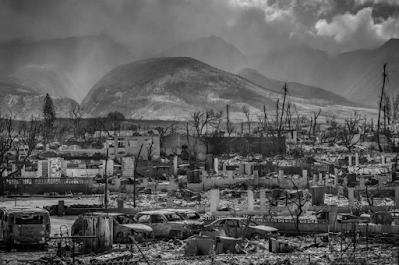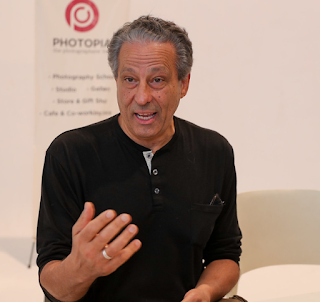Via AP
January 31, 2024
Hal Buell, who led AP’s photo operations from darkroom era into the digital age, dies at 92
SUNNYVALE, Calif. (AP) — Hal Buell, who led The Associated Press’ photo operations from the darkroom era into the age of digital photography over a four-decade career with the news organization that included 12 Pulitzer Prizes and some of the defining images of the Vietnam War, has died. He was 92.
Buell died Monday in Sunnyvale, California, after battling pneumonia, his daughter Barbara Buell said in an email. His final two months were spent with her and her husband, and he died in their home with his daughter at his side.
“He was a great father, friend, mentor, and driver of important transitions in visual media during his long AP career,” Barbara Buell said. “When asked by the numerous doctors, PT, and medical personnel he met over the last six months what he had done during his working life, he always said the same thing: ‘I had the greatest job in the whole world.’”
Colleagues described Buell as a visionary who encouraged photographers to try new ways of covering hard news. As the editor in charge of AP’s photo operations from the late 1960s to the 1990s, he supervised a staff that won a dozen Pulitzers on his watch and he worked in 33 countries, with legendary AP photographers including Eddie Adams, Horst Faas and Nick Ut.
FILE - South Vietnamese National Police Chief Brig Gen. Nguyen Ngoc Loan executes a suspected Viet Cong officer with a single pistol shot in the head in Saigon, Vietnam, Feb. 1, 1968. The image won the 1969 Pulitzer Prize for spot news photography. (AP Photo/
Eddie Adams, File)
“Hal pushed us an extra step,” Adams said in an internal AP newsletter at the time of Buell’s retirement in 1997. “The AP had always been cautious, or seemed to be, about covering hard news. But that was the very thing Buell encouraged.”
Buell made the crucial decision in 1972 to run Ut’s photo of a naked young girl fleeing her burning village after napalm was dropped on it by South Vietnamese Air Force aircraft. The image of Kim Phuc became one of the most haunting images of the Vietnam War and came to define for many all that was misguided about the war.
After the image was transmitted from Saigon to AP headquarters in New York, Buell examined it closely and discussed it with other editors for about 10 minutes before deciding to run it.
FILE - In this June 8, 1972, file photo taken by Huynh Cong “Nick” Ut, South Vietnamese forces follow behind terrified children, including 9-year-old Kim Phuc, center, as they run down Route 1 near Trang Bang after an aerial napalm attack on suspected Viet Cong hiding places. The image won the 1973 Pulitzer Prize for spot news photography. He was 92. (AP Photo/Nick Ut, File)
“We didn’t have any objection to the picture because it was not prurient. Yes, nudity but not prurient in any sense of the word,” Buell said in a 2016 interview. “It was the horror of war. It was innocence caught in the crossfire, and it went right out, and of course it became a lasting icon of that war, of any war, of all wars.”
Ut was just 20 when he made the iconic photo that won him the Pulitzer Prize. Without Buell’s support, he said, the photo might never had become a symbol of the war.
“He thought it was powerful, and he wanted to get it out right away,” Ut said by phone Tuesday.
He said he last spoke several weeks ago with Buell, who he called a mentor and a great friend.
“Hal was the best boss I ever had,” Ut said. “He was very supportive of me.”
Santiago Lyon, a former vice president and director of photography at AP, called Buell “a giant in the field of news agency photojournalism.”
David Ake, who recently retired as AP’s director of photography, said Buell set the standard for that role.
“I can’t tell you the number of times I would get a pearl of ‘Hal wisdom’ from one staffer or another,” Ake said. “He will be missed both in the AP and by the entire photojournalism community.”
Buell joined the AP in the Tokyo bureau on a part-time basis after graduating from Northwestern University in 1954 with bachelor’s and master’s degrees in journalism. He was serving with the Army at the time, working on the military newspaper Stars and Stripes.
Out of the Army two years later, he joined AP’s Chicago bureau as a radio writer, and a year later, in 1957, was promoted to the photo desk in AP’s New York office.
Buell returned to Tokyo at the end of the decade to be supervisory photo editor for Asia and came back to New York in 1963 to be AP’s photo projects editor. He became executive news photo editor in 1968 and in 1977 he was named assistant general manager for news photos.
During his decades with AP, technology in news photography took astonishing leaps, going from six hours to six minutes to snap, process and transmit a color photo. Buell implemented the transition from a chemical darkroom where film was developed to digital transmission and digital news cameras. He also helped create AP’s digital photo archive in 1997.
“In the ‘80s, when we went from black-and-white to all color, we were doing a good job to send two or three color pictures a day. Now we send 300,” Buell said in the 1997 AP newsletter.
Former AP CEO Lou Boccardi said in a statement that Buell drove this remarkable period of innovation and transition, but he never forgot, nor did he let his staff forget, that capturing “the” image that told the story was where it all had to start.
“Fortunately for us, and for news photography, his vision and energy empowered and inspired AP Photos for decades,” Boccardi said.
After retiring in 1997, Buell wrote books about photography, including “From Hell to Hollywood: The Incredible Journey of AP Photographer Nick Ut;" “Uncommon Valor, Common Virtue: Iwo Jima and the Photograph That Captured America;” and “The Kennedy Brothers: A Legacy in Photographs.” He was the author of more than a dozen other books, produced film documentaries for the History Channel and lectured across the United States.
“In the ‘80s, when we went from black-and-white to all color, we were doing a good job to send two or three color pictures a day. Now we send 300,” Buell said in the 1997 AP newsletter.
Former AP CEO Lou Boccardi said in a statement that Buell drove this remarkable period of innovation and transition, but he never forgot, nor did he let his staff forget, that capturing “the” image that told the story was where it all had to start.
“Fortunately for us, and for news photography, his vision and energy empowered and inspired AP Photos for decades,” Boccardi said.
After retiring in 1997, Buell wrote books about photography, including “From Hell to Hollywood: The Incredible Journey of AP Photographer Nick Ut;" “Uncommon Valor, Common Virtue: Iwo Jima and the Photograph That Captured America;” and “The Kennedy Brothers: A Legacy in Photographs.” He was the author of more than a dozen other books, produced film documentaries for the History Channel and lectured across the United States.












